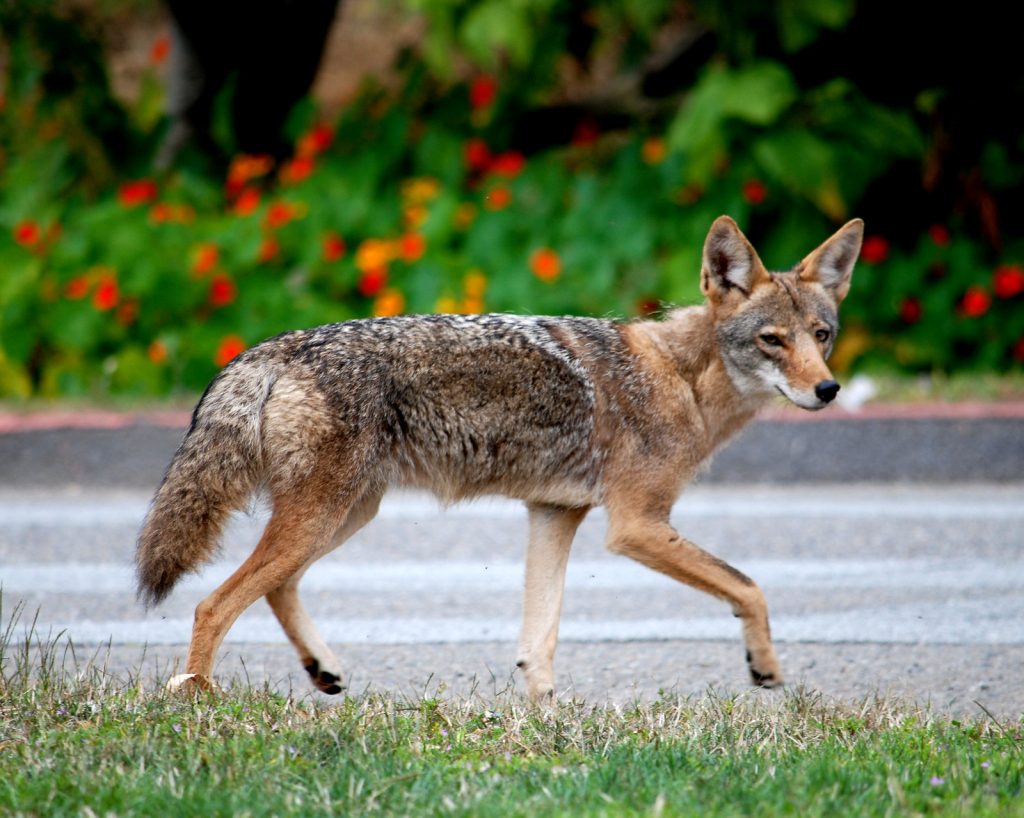
To listen to this reflection as a podcast, click here.
The howl of the coyote is America’s “original national anthem.”
That’s the conclusion of author and history professor Dan Flores in his book Coyote America, an examination of the life and times of the creature that almost certainly qualifies as our nation’s most hated animal.
Coyotes have roamed North America for more than a million years. Their original domain was west of the Mississippi River, which is where Lewis & Clark first noticed them during their 1804-1806 expedition.
During the years that followed, ranchers and settlers quickly concluded that wolves, mountain lions, and coyotes – the West’s so-called “apex predators” – had to go. The first two species were hunted almost to extinction. Wolves are only now being slowly reintroduced in selected areas, while the big cats are clinging precariously to just a fraction of their original territory.
The coyotes, however, proved resilient. By the middle of the 20th century government officials were surprised to learn that they were still…everywhere.
Thus began an all-out, federally endorsed program of eradication. Tens of millions of animals were destroyed. No coyote would be left standing. They became “the enemy.” Coyotes were portrayed as sneaky, shiftless, and unworthy of respect. A classic “diss” of one cowboy to another in a classic Western became, “You no-good, filthy coyote.”
Still, as Flores notes, the coyotes somehow continued to thrive. Naturalists discovered that when a local population began to decline, females responded by bearing larger litters.
Then Warner Brothers Studios came to the rescue. In the 1960s, for the first time ever, coyotes were portrayed in a sympathetic light – all because of that perpetually exasperated, road runner-stalking cartoon character, Wile E. Coyote. Walt Disney took up the coyotes’ cause as well, producing a half dozen nature films that helped soften public opinion.
In the meantime, Coyote Nation was itself on the move. The animals began to migrate east. They crossed the broadest rivers (it’s fun to imagine how some of them pulled this off). They moved into major metro areas. As Flores puts it, they suddenly discovered “a new refuge…chock full of food and cover” where no one ever tried to trap, poison, or shoot them.
Today America is inundated with “urban coyotes” – wild animals that are fully accommodated to streets, parking lots, playgrounds, and Dairy Queens. It’s not unusual for patrons of a fine restaurant in Boston or Baltimore or Boca Raton to look up and see a coyote yawning and stretching on the roof just above the front door.
Incredibly, wildlife experts tell us that right now every single American (except in the state of Hawaii) lives within one mile of a coyote. That includes Manhattan and downtown Chicago. Today we can truthfully say that our whole country is Coyote Country.
If that doesn’t stir feelings of admiration for one of the world’s most resilient creatures, nothing will.
Of course, it’s been hard for people to surrender their primal fears and suspicions after so many years. Coyotes want to make a meal of our pets, right? Yes, that does happen from time to time. Every night we secure our barn cats inside our barn as a precaution. But studies show that cats and dogs make up only 1-2% of the diet of urban coyotes. They are far more enthusiastic about the myriads of rodents that accompany human beings wherever we happen to live.
A study of coyotes tends to prompt an awkward theological question: “Lord, why did you make so many irritating creatures? Why are there mosquitoes, chiggers, poisonous snakes, and coyotes?”
Here we need to inhale a huge dose of humility and acknowledge that everything does not exist for our convenience. That includes weather patterns, earthquakes, and the aches and pains of our Medicare years.
Coyotes, after all, were here first – long before any humans set foot in North America.
Previous generations of Christians felt empowered by God’s words to the first human couple in Genesis 1:28: “God blessed them and said to them, ‘Be fruitful and increase in number; fill the earth and subdue it. Rule over the fish in the sea and the birds in the sky and over every living creature that moves on the ground.’” The notion of dominion over creation seemed to provide humanity permission to hunt, domesticate, and/or eradicate any creatures as we saw fit.
In more recent years, however – as we have begun to assess the substantial damage we have inflicted on the air, the water, and the living things of our one-and-only home planet – dominion has increasingly begun to be interpreted as stewardship.
We must take into account what we read in the very next chapter: “The Lord God took the man and put him in the Garden of Eden to work it and take care of it” (Genesis 2:15). The Earth isn’t just a reservoir of resources for people to strip-mine. It is the loving work of a Creator who has placed its care and preservation into the hands of those who are made in his image.
So, when all is said and done, what does God think of these wild canines who have moved into our neighborhoods?
We find a hint in Psalm 104:27-28: “All creatures look to you to give them their food at the proper time. When you give it to them, they gather it up; when you open your hand, they are satisfied with good things.”
In other words, God loves coyotes.
With appropriate wonder, respect, and a fair amount of admiration, maybe we should, too.
